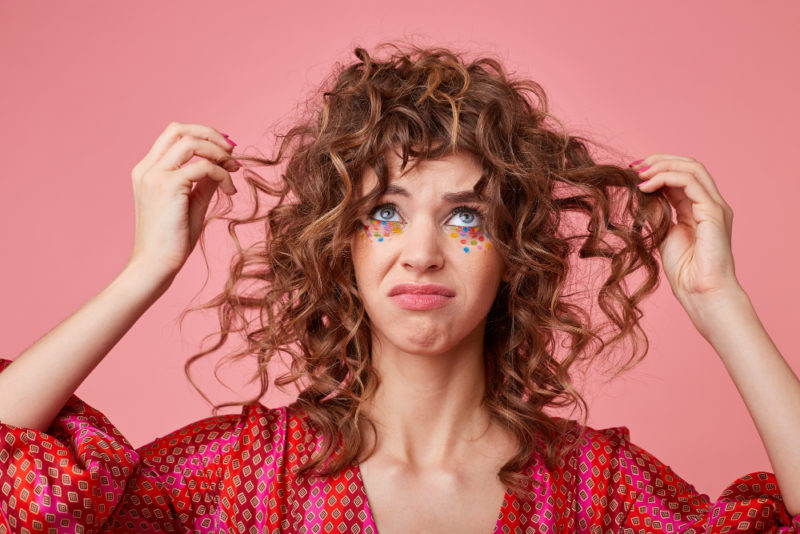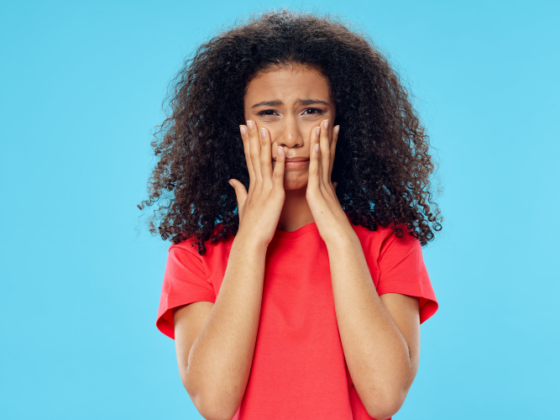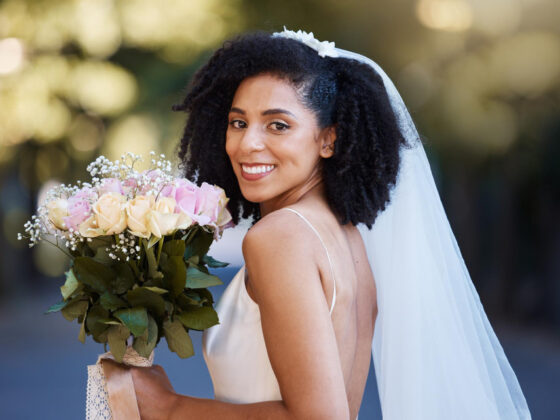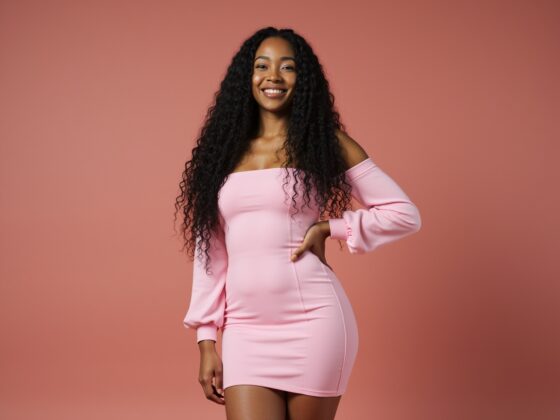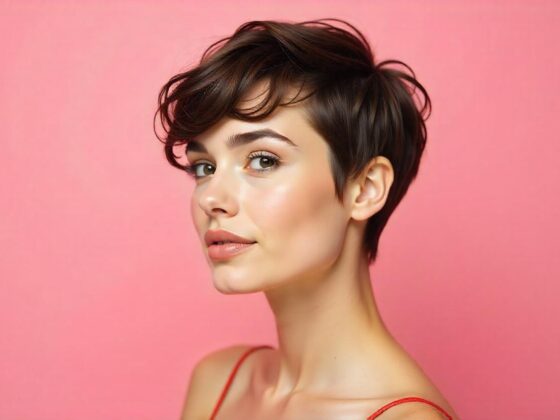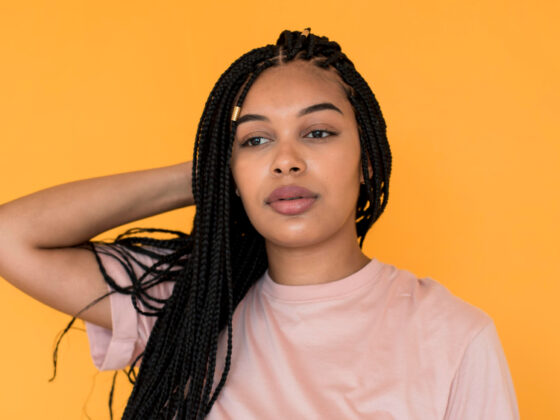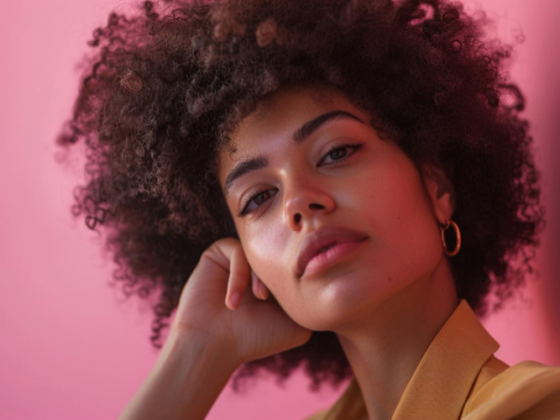You used to have beautiful coily curls.
But of late, you’ve started noticing that your curls are really loose and certain parts of your hair are limp and not curling anymore.
What is happening?
Why is your curly hair becoming wavy?
I know how disconcerting this might be, but don’t worry. In this post, I’ll guide you about the different reasons your curly hair is becoming wavy and help you fix it in each case.
Let’s begin.
This post contains affiliate links, meaning I may make a commission at no extra cost to you if you decide to click on a link and purchase something. Click here to read the full disclaimer.
Before I get into why your curly hair is becoming wavy, I’m just going to sidetrack for a bit and explain what causes curly hair in the first place.
This will help you understand more about curly hair.
Why is your hair curly or what causes curly hair?
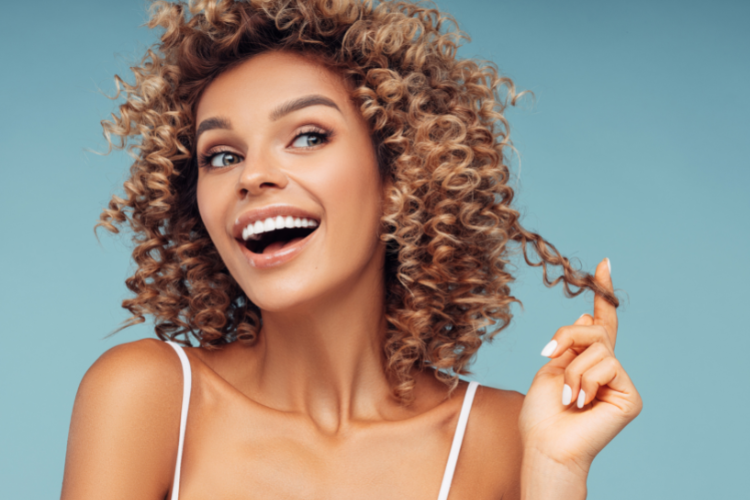
Of course, genes have a huge part to play in this.
If one or both of your biological parents have curly hair, chances are you too will have wavy or curly hair.
Your genes will even determine what type of hair you have.
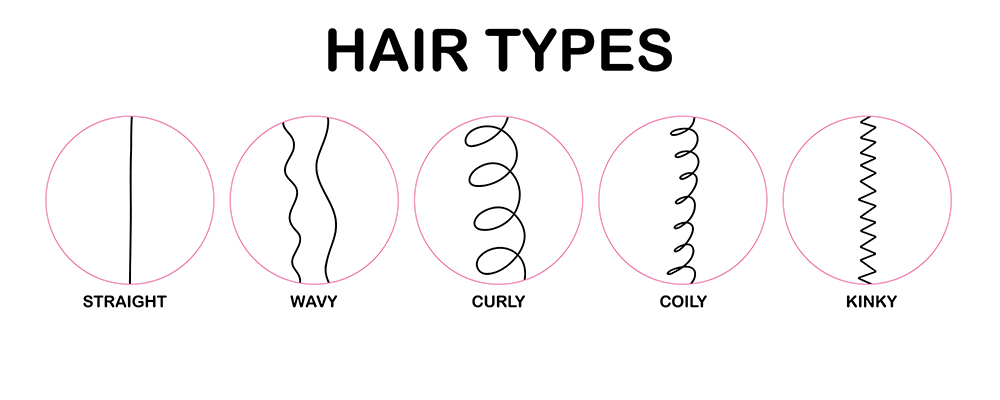
But there is more to it than just genes.
Having curly hair depends on 2 important factors:
- The hair shaft (hair that is outside that we can see)
- The hair follicle (hair root or hair within the scalp)
Your hair shaft is what you see outside or what you consider “hair.”
The hair follicle is what grows underneath the skin or dermis and it is under the scalp. Here’s a diagram to help you understand this better:
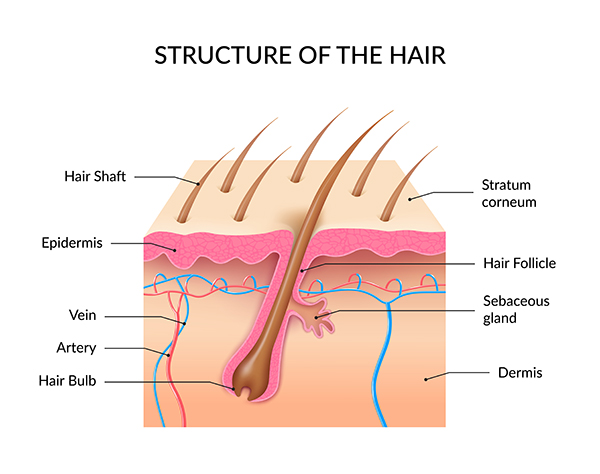
Let’s start with the follicle first.
What does the hair follicle do?
The shape of your hair follicle largely affects your hair texture.
People with straight hair have perfectly round hair follicles – this is what helps their hair grow and look straight.
However, people with curly hair have oval-shaped hair follicles, which makes the hair look curly. The flatter the oval shape, the more curly or kinky the hair becomes.
Another factor is the angle at which the hair follicle grows from the scalp.
If it’s straight, the hair will grow straight downwards whereas if it is at an angle to the dermis, it will curl.
What does the hair shaft do?
The hair shaft is made of dead cells that contain a special protein called Keratin. This protein can also be found in your nails and skin.
It is made up of sulfur that forms strong bonds.
The more sulfur bonds hair has, the curlier it becomes.
Suffice it to say that straight hair has fewer sulfur bonds as compared to curly and kinky hair.
Of course, there is more to it than that. But for the purpose of understanding why your curly hair is becoming wavy, we just need to understand this much.
Now that we know why we have curly hair and what causes hair to become curly, let’s understand why our curls are becoming looser.
9 Reasons why your curly hair is becoming wavy or the curls are getting looser
1. You are depressed/stressed
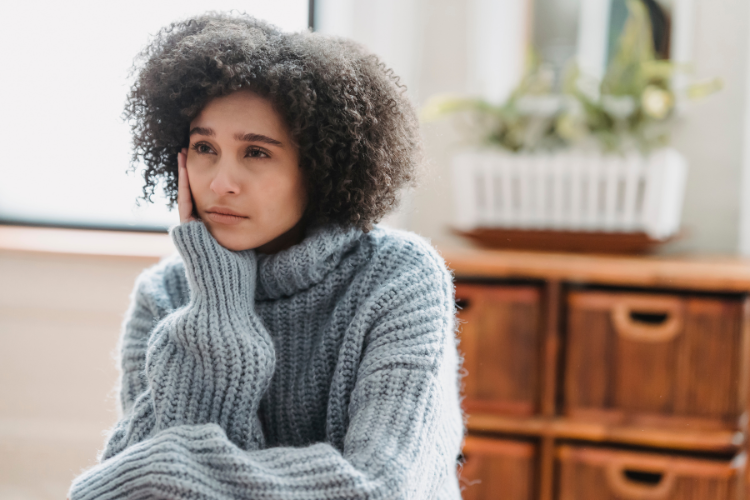
If you go through bouts of depression or are stressed for a long period of time, your hair texture can change.
Due to the large fluctuation of your hormones, the shape of your hair follicles can change and become more round.
This can cause certain parts of your hair to become wavy or more straightforward than others.
This happened to me when I found out my ex was cheating on me, I went through a tough time and I couldn’t eat or sleep well for a few months.
My hair started falling out and becoming wavier.
You have to understand that hormones play a huge part in how our hair looks.
If you are going through stress or depression, you might notice:
- Your hair looks more dry and matted
- Your hair becoming limper
- Different parts of your hair look different – some curly, some wavy, some straight
- The overall texture changing
Hormones can be affected by changes in diet, changes in sleep, and changes in lifestyle.
Even puberty, menopause, pregnancy, and birth control pills can cause a huge shift of hormones and all of this affects hair.
The only way to combat this is to take better care of yourself and try to maintain a good lifestyle like:
- Getting 8 hours of sleep a day
- Eating lots of protein and good fats
- Drinking lots of water (staying hydrated always)
- Doing more meditation and journalling and practicing more self-care
You cannot reverse hormonal change completely especially if it’s out of your control like going through puberty, menopause, or pregnancy, but by taking good care of your overall health, you can help your hair become more healthy.
2. Excessive build-up of products
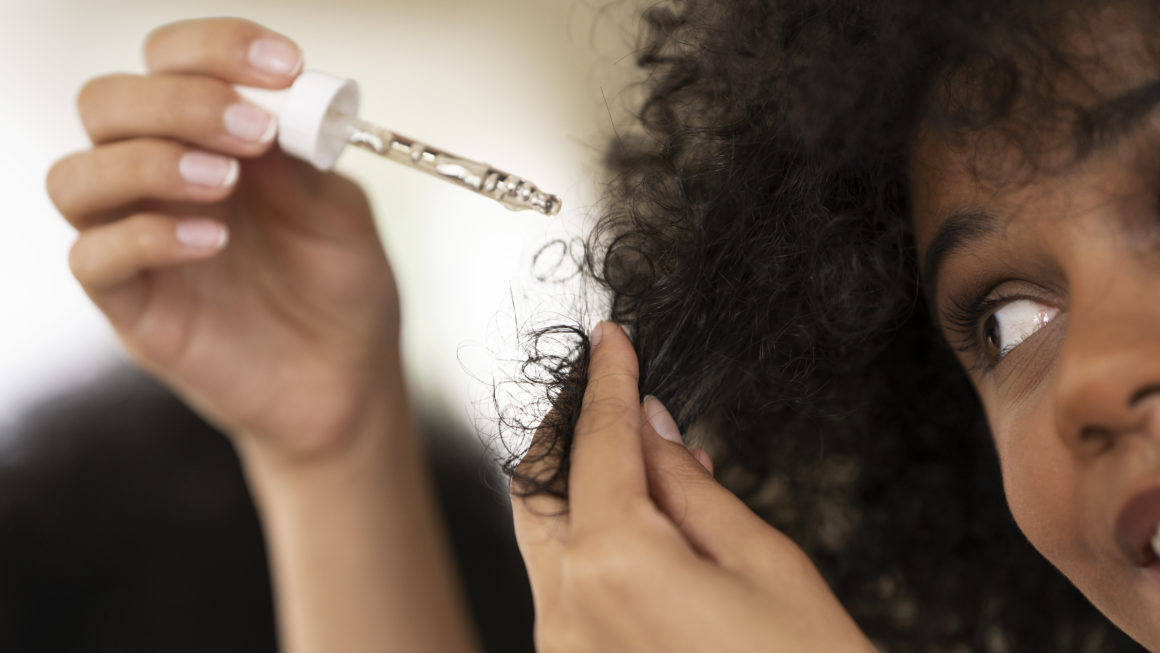
When I was growing up, I assumed that hair oil was a blessing for long curly hair.
I would apply oil on my head and wait for hours for it to get absorbed.
But it is now well-known that oil only needs 2 hours to get absorbed before it starts building up and makes your hair and scalp greasy.
The build-up is very bad because your scalp needs to breathe.
If you use a lot of products and don’t get rid of the build-up when shampooing, these products can accumulate on your scalp and clog it – leading to dandruff and an itchy scalp.
You can also develop skin infection on your scalp and all of this does impact the curl pattern of your hair.
So, the best way to fix this is to:
- Be careful of what products you use: Some products honestly don’t agree with us. If you notice that certain curly hair products are causing dryness or itchiness, stop using them.
- Do not leave any oil in your hair for longer than two hours: It will clog your scalp and coat your hair strands leading to an oily or greasy scalp. This will require more shampoo to clean – leading to more dryness.
- Use a clarifying shampoo: I highly recommend Pura D’Or clarifying apple cider vinegar shampoo and conditioner set because it’s a game changer for dry or damaged hair. It seriously helps clarify the hair of excessive buildup without drying the hair.
3. Your hair lacks protein
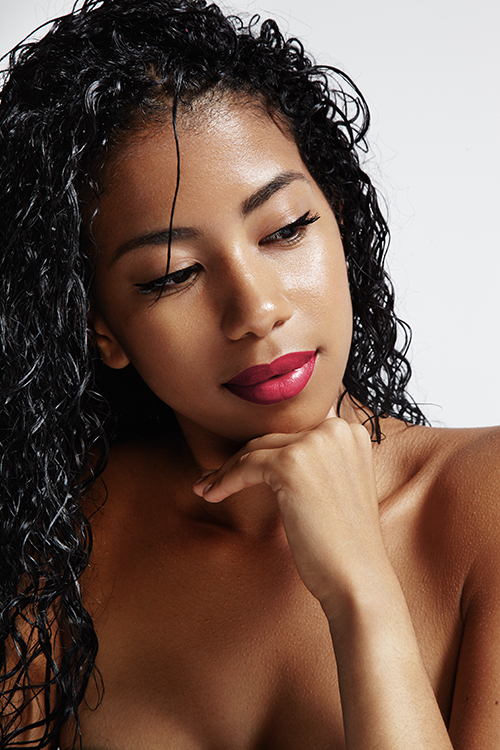
If you notice that your curls are extremely moisturized but break easily when stretched, then your hair could be seriously lacking protein.
What are the signs of protein-deficient hair?
- When your hair is wet, it feels very elastic and soft
- You stretch your hair strand and it doesn’t return to its curl, it’s sort of limp and stretchy.
- You’re deep-conditioning every week but the curls are loose and stringy
- You’re using hair creams and gels, but your curls just won’t stand – they become loose
All these are signs that your hair requires more protein.
This happens when we over-moisturize our hair and the protein-moisture balance is thrown off.
If you feel that your curls are loose or your curly hair is becoming wavy due to a lack of protein, then here are some ways to give your hair more protein:
- Eat more protein-rich foods: You have to work inwards in order to see the protein in your hair. Some protein-rich foods include legumes, eggs, tofu, nuts, berries, fish like salmon, yogurt, etc. Here is a whole list of protein-rich foods for hair.
- Give your hair a protein treatment every 6 weeks: I like to make a mask of 1 tablespoon of honey, half an avocado, a whole egg, and a tablespoon of greek yogurt – leave the mask on for 30 minutes and then wash your hair normally.
- Pre-poo with coconut oil: 1 hour before washing your hair with shampoo, just apply a little fractionated coconut oil to your hair. It will not only enrich your hair with protein, but it will also help your hair stay more moisturized. Just don’t use too much, otherwise, you could be doing more bad than good.
4. Your hair is really long
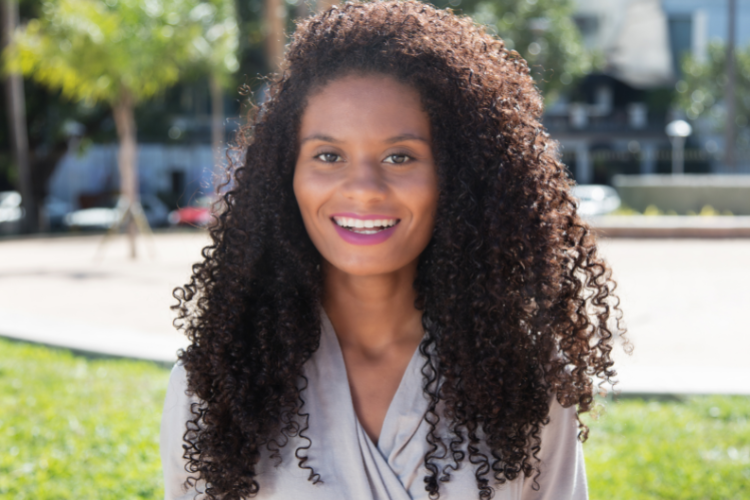
If you have very dense, thick curly hair and you have long hair, you could see a change in curl pattern and your curls can become looser, especially towards the ends or even near the roots.
The best way to get your bouncy curls back is to add some layers.
Layers are amazing for curly girls.
You can ask for more layers, this will help you get more bounce back in your curls.
Or if you’re bold enough, go for a short haircut.
Just make sure that you don’t cut your hair too short because the stylist might cut the hair just before it starts to curl. This can cause your hair to look wavy or almost straight.
5. You haven’t trimmed your hair in a while
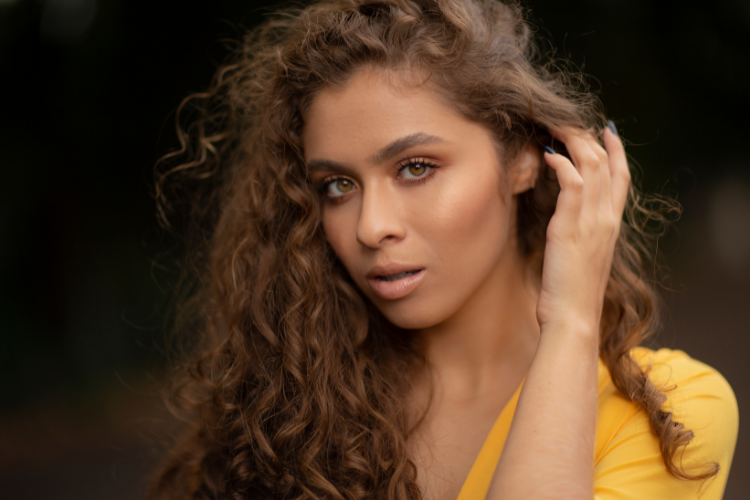
All of us are prone to split ends.
And if you don’t go for regular trims (once every 4-6 weeks), then the split ends can ride up the hair shaft and cause a lot of breakage and damage.
The hair that is damaged will not grow and it will look wavy or dry.
Take a look at your tips – if they are dry, matted,, or wavy, then there is a chance you have a lot of split ends.
Get a trim.
Keep getting trims every 2 weeks, till all the damaged hair is cut off.
Once your split ends are gone, you can space out the trims every 4-6 weeks.
Here are some ways to reduce split ends:
If you want to reduce split ends, then try this:
- Use satin pillowcases: Satin pillowcases help reduce friction and cause fewer split ends and tangles.
- Use satin scrunchies: For the same reason above. I noticed fewer tangles and less breakage after switching from cotton bands to satin scrunchies.
- Tie your hair in loose hairstyles: Opt for loose buns on top of your head when you’re at home or sleeping – this helps your hair stay healthy and is a good protective hairstyle. Avoid tight hairstyles that tug at the roots.
- Moisturize your ends thoroughly: Every time you shower, make sure you use a good moisturizing conditioner for the split ends and do a nourishing hair mask once a week. You only have to keep the hair mask on for 30 minutes and then rinse it well with cold water.
6. Your hair is suffering from heat/color damage
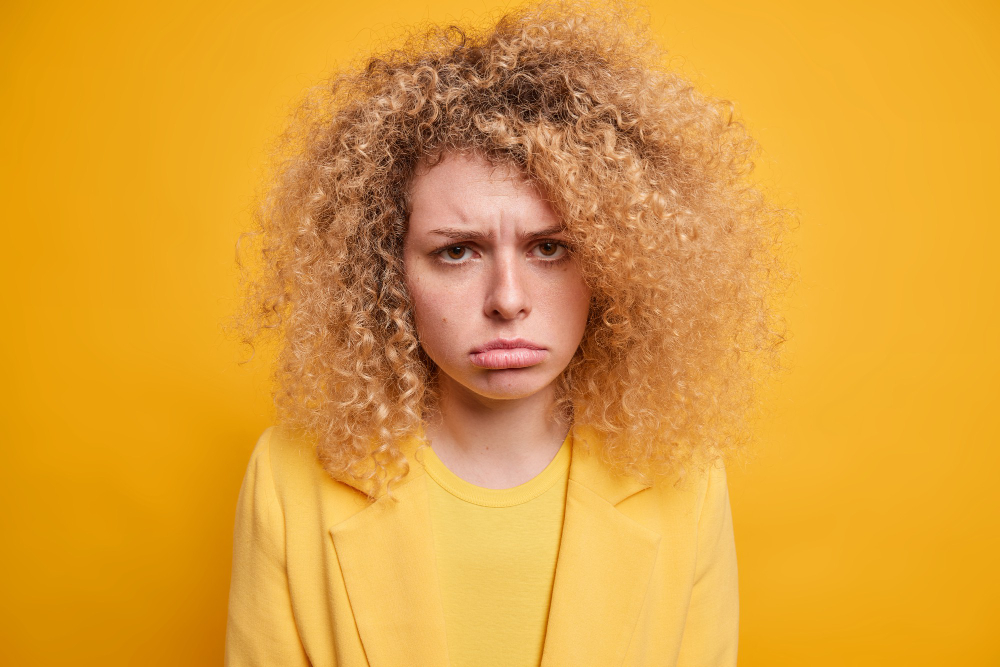
Heat does affect hair.
Heat and hot tools dry out curly hair extensively and increase the porosity of your hair. Your cuticles along the hair shaft get raised when heat is applied to your hair – this makes it very difficult for hair to retain moisture for a long time.
Extended use of heat can damage your hair and change your curl pattern.
If you constantly use a blow-dryer or you straighten your hair often, then your curl pattern is going to be affected and your curls will become looser.
Additionally coloring your hair frequently also damages hair.
I’ve been through this a lot in college. I straightened my hair frequently (using chemicals and heat) and I colored my hair too.
The damage was extensive.
My hair would break easily, I had a lot of hair fall throughout the day.
And my curl pattern changed.
If you want to improve the health of your hair and get back your curls, stop the heat and coloring.
It’s not easy, but honestly, it’s the key to having healthy hair.
If you can’t stop the heat, then use a heat protectant – this will protect your hair from heat damage to a large extent.
If your hair is colored, then remember to condition your hair regularly and use Olaplex treatments.
Protect your hair by covering it or wearing hair sunscreen when going out. Avoid swimming without a swim cap that covers your hair and avoid hard water. You can get a water filter for your showerhead.
You can also slowly cut off the damaged hair every 2 weeks till all of the damaged hair and split ends are gone – this will help your hair become more healthy.
7. You are using heavyweight hair products that are weighing down your hair

Everybody’s hair is different.
Kinky hair is more prone to dryness, so butters work really well for kinky hair.
But if I use the same product for my hair, it gets weighed down a lot because I have curly hair (3B curls).
So, the type of product definitely matters.
I suggest finding out your hair type and then using products that suit your hair.
Shea butter can be a very heavy product and people with fine curly hair or loose curls should avoid using such products.
Simply put, lightweight products have smaller molecular weights and sizes, and heavyweight products have larger molecular weights and sizes.
Heavy-weight products include silicones mainly.
So if you feel that your curl pattern is changing or your curly hair is becoming wavy, then look at your products.
- Does your conditioner or curly hair cream contain silicone? It may be adding gloss and shine to your hair, but it can also weigh your hair down and change your hair pattern.
- Are you using coconut oil? Coconut oil is heavy and if you have fine hair, then it’s best you use light oils like Jamaican black castor oil or argan oil, or grapeseed oil.
- Are you using too much natural butter in your hair? If you really like the product, then just use it a little rather than a lot – a little goes a long way.
8. You’re not styling your hair optimally
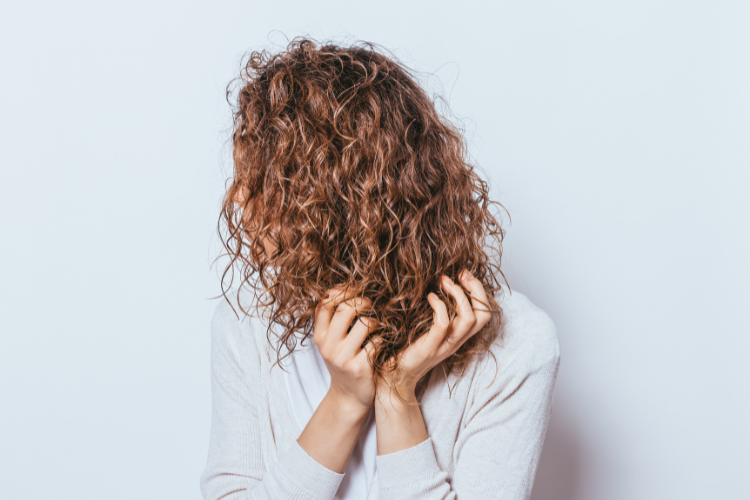
I know, curly hair can be very exhausting.
It took me years to learn what my hair wanted and how to style it.
It’s very time-consuming.
But if you notice that your hair is very loose and your curls are limp, apart from the factors I mentioned above, it might also be that your hair is just not being styled well.
For instance, after you come out from a shower, apply your curly products to damp hair, not wet hair.
Wet hair is already moisturized, so applying a curly cream or lotion is not going to work well because the hair won’t be able to absorb the product.
I usually air dry my hair a bit and then apply the curly hair cream to my hair.
I first spritz my hair with water using this spray bottle (it’s a blessing for curly girls) create an emulsion in my hands (by mixing the curly hair cream and a little water) and then rub the cream to my hair using the preying motion.
After the cream is in my hair and I’ve made sure that there are no tangles, I squish the hair pushing it upwards (also called hair scrunching) – this is what causes the curls and gives your hair more coily curls.
You can also use the finger-coiling method, but personally, I prefer to have the best results with minimum time spent on styling.
9. You are tying your hair too lightly
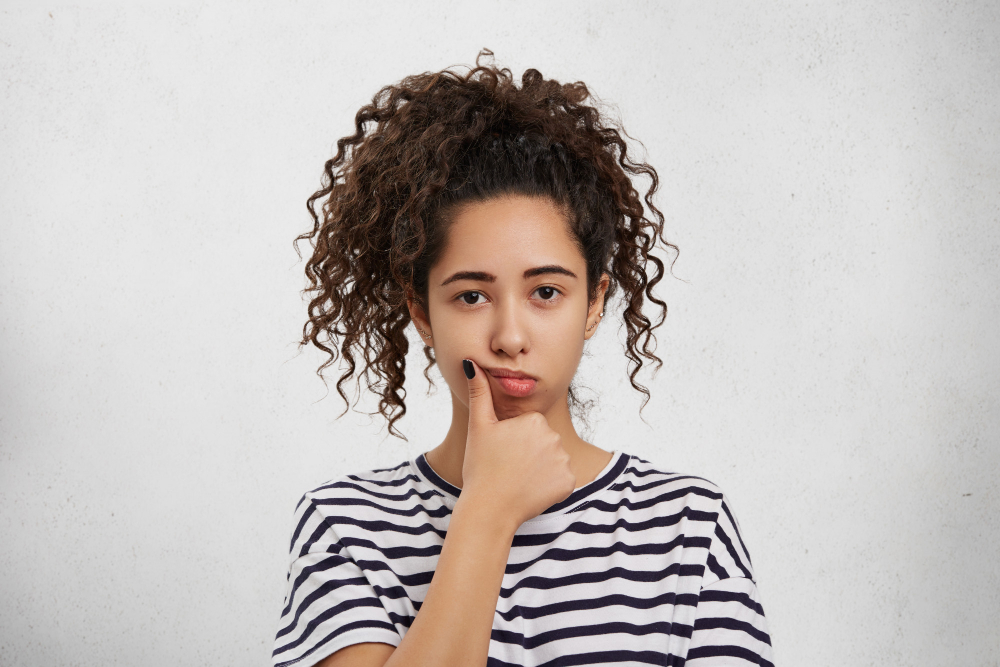
If you are constantly braiding your hair or tying your hair in tight ponytails and buns all the time, this can cause your curls to become looser.
It happened to me when I was in school. Long hair had to be braided and it did affect my curls. My curls became more stretched and stringy and it was unable to maintain their bounce. I had fewer coils and ringlets. And my hair looked wavy after unbraiding it.
I noticed my curls returning to their original form when I got a haircut and I maintained short hair since high school.
Furthermore, if you are constantly parting your hair on one side or tying your hair too tightly at the same place or position, you could even see hair loss at the sides of your head. The tight tension tends to break the hair at the places where it’s being pulled the most
So, do protective hairstyles that aren’t tight like a bun on top of the head. Leave your hair loose at night when you are at home or tie it very loosely on top of your head.
Change your parting frequently.
Bonus: Your hair is too dry
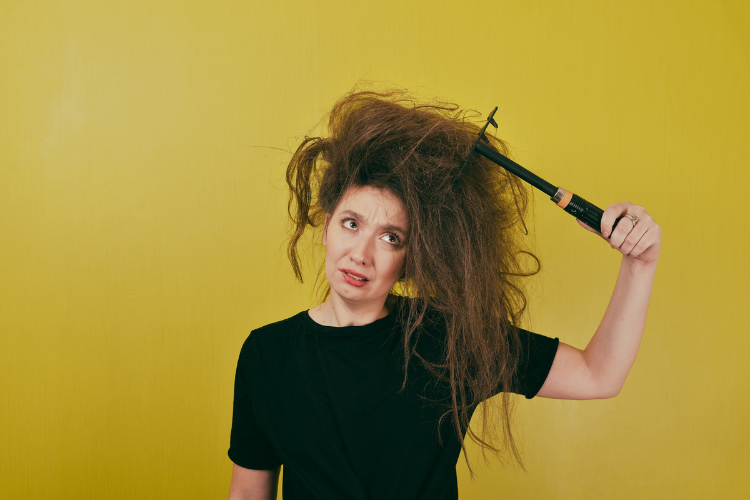
Curly hair is more prone to dryness.
The curlier or coilier your hair is, the more prone to dryness it is.
This is because there are so many angles in your curls that the sebum takes a very long time to reach the hair tips.
When hair is dry, it will spread out more and grow sideward just to absorb moisture from the hair – kinda like how a tree’s roots spread out radially to drink up more water from the soil.
Prolonged dryness can change your curl pattern and make it looser and more damaged.
So, you need to focus on making sure that your hair is well moisturized.
Apart from drinking a lot of water and eating a lot of protein-rich foods, you can also make sure that your hair is moisturized by using a good moisturizing hair cream.
I use the Cantu Curl Activator for my curls and I love it. If you have very dry hair, you can use argan oil to seal in the moisture after applying the cream.
Only apply the cream to damp hair and not sopping wet hair.
Also, use a hydrating conditioning mask once a week so that your hair is more moisturized.
Apply the hair mask to freshly shampooed hair and leave it in for 15-30 minutes. Rinse it with cold water after that and your curls will be moisturized and slick.
This will also ensure fewer tangles.
If possible, sleep on a satin pillowcase and get satin scrunchies – these made a world of a difference to my curls.
Conclusion
I hope this post helped you identify why your curly hair is becoming wavy.
My curls have become wavy plenty of times because I have experimented with my hair a lot.
So, no matter what happens, you can always undo the damage by taking more care of your health and your curls.
Here are a few more posts to help you on your curly journey:
- How to grow my hair faster naturally?
- 7 reasons why your hair is getting shorter without cutting it
- 13 reasons why your curls look so messy all the time + how to fix it
- Why is my hair so stiff and dry after flat ironing?
- Why does Keratin make my hair feel so dry? How to fix it?
- How to dry transitioning hair without heat
- Can I braid relaxed hair? How do you prep it?
